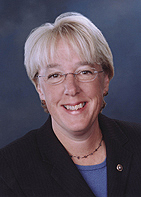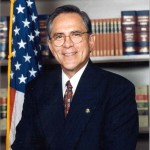Today, I attend an event hosted by ACTE that brought together a powerful group of business, congressional, education and association leaders to discuss how CTE can contribute to our nation’s economic recovery.Â
Deputy UnderSecretary of Education Robert Shireman shared what a pivotal event it was when the President, in his address to the nation in February 2009, called upon “every American to commit to at least one year or more of higher education or career training. This can be community college or a four-year school; vocational training or an apprenticeship. But whatever the training may be, every American will need to get more than a high school diploma.â€Â  The fact that the President didn’t just say that every American needs more college was very purposeful and intended to express this Administration’s support and understanding that today’s economy needs many different pathways to success. Further, Shireman shared that CTE is a “critical issue to the future of our nation.”
 Senator Patty Murray (D-WA) shared her strong desire to get WIA reauthorization completed this year and that she would be introducing an updated version of her pathways bill in the next few weeks. She called herself a strong ally of CTE and indicated that she would continue to “fight for investments in these essential programs” like WIA and Perkins. Senator Murray is chair of the Subcommittee on Employment and Workplace Safety.
Senator Patty Murray (D-WA) shared her strong desire to get WIA reauthorization completed this year and that she would be introducing an updated version of her pathways bill in the next few weeks. She called herself a strong ally of CTE and indicated that she would continue to “fight for investments in these essential programs” like WIA and Perkins. Senator Murray is chair of the Subcommittee on Employment and Workplace Safety.
Â
 Representative Ruben Hinojosa (D-TX), Chair of the House Subcommittee on Higher Education, Lifelong Learning and Competitiveness called CTE “one of the best tools for keeping kids engaged and successful in school.” Further, he indicated that “CTE can provide a roadmap” for us to operationalize one of the Race To The Top goals – college and career ready standards. Representing a district that is one of fastest growing in the country, Congressman Hinojosa shared that CTE has played a role in his district’s success and believes that CTE can play an important role in our nation’s economic recovery and growth.
Representative Ruben Hinojosa (D-TX), Chair of the House Subcommittee on Higher Education, Lifelong Learning and Competitiveness called CTE “one of the best tools for keeping kids engaged and successful in school.” Further, he indicated that “CTE can provide a roadmap” for us to operationalize one of the Race To The Top goals – college and career ready standards. Representing a district that is one of fastest growing in the country, Congressman Hinojosa shared that CTE has played a role in his district’s success and believes that CTE can play an important role in our nation’s economic recovery and growth.
 Representative Brian Baird (D-WA), Chairman of the CTE Caucus, spoke passionatlely of his support for CTE and shared that he believes CTE is “what will keep the United States competitive.” He indicated that the CTE Caucus has some 60 members and is bipartisan — and is always looking for additional members to join! He shared his desire to have every school counselor value college and careers equally and stated that if most parents understood what their children will make with a liberal arts degree versus a technical degree, perceptions would change.Â
Representative Brian Baird (D-WA), Chairman of the CTE Caucus, spoke passionatlely of his support for CTE and shared that he believes CTE is “what will keep the United States competitive.” He indicated that the CTE Caucus has some 60 members and is bipartisan — and is always looking for additional members to join! He shared his desire to have every school counselor value college and careers equally and stated that if most parents understood what their children will make with a liberal arts degree versus a technical degree, perceptions would change.Â
Â
 A panel, moderated by OVAE’s Deputy Assistant Secretary Glenn Cummings, that included former Governor John McKernan (R-ME), China Gorman the Society for Human Resource Management, Paul De Giusti of CCI, Stuart Udell of Penn Foster, Martin Scaglione of ACT and Tom Kassouf of Snap-On shared support for career pathways and emphasized the need for data to prove CTE’s effectiveness. Governor McKernan spoke of the need for ROEI – return on the education investment.
A panel, moderated by OVAE’s Deputy Assistant Secretary Glenn Cummings, that included former Governor John McKernan (R-ME), China Gorman the Society for Human Resource Management, Paul De Giusti of CCI, Stuart Udell of Penn Foster, Martin Scaglione of ACT and Tom Kassouf of Snap-On shared support for career pathways and emphasized the need for data to prove CTE’s effectiveness. Governor McKernan spoke of the need for ROEI – return on the education investment.
Â
The afternoon concluded with a series of round table discussions focused on making recommendations to policymakers at all levels. The presentations were recorded and will be available on the ACTE website, as will a paper summarizing the discussion and recommendations.
Overall, the day gave me hope that there are many stakeholders who are ready to band together to break CTE free from the stigma and stereotypes that surround it. The fact that so many diverse leaders (from IBM, Microsoft, Apple, Cisco, National School Boards Association, US Chamber of Commerce, ACT, NEA, AFT, etc.) came together for a day-long discussion and stayed to the end is a promising sign. CTE has many advocates. The challenge is to marshall these efforts so that we can change perceptions, gather the data to show the return on the investment, and ensure that we have rigorous curriculum aligned to world class standards.Â
And the more voices, the more advocates, the more allies, the greater the chances that CTE can reach its potential and help our nation meet the economic challenges we face today and secure our economic future. Remember the saying ‘many hands make light work?’  That saying kept running through my mind during today’s meeting. Hopefully we can build on the interest and momentum from today’s event to make real change happen!





